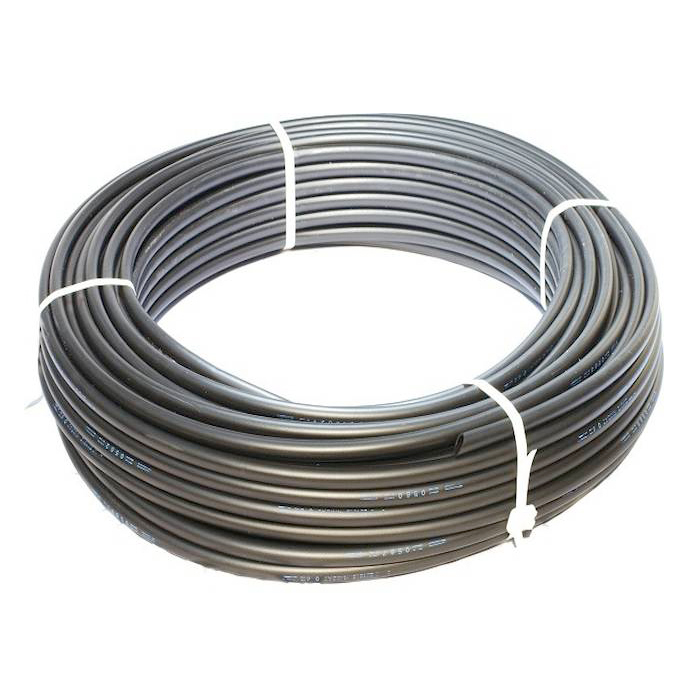Drip Irrigation for South African Gardens
What is drip irrigation, the advantages and disadvantages, and what do you need to get started? Drip irrigation systems typically consist of micro tubes with emitters connected to mainline tubing that has been placed on the ground beside plants. The emitters then periodically drip water into the soil at the plant's root zone. This method keeps optimal moisture levels to improve plant growth efficiency and quality.
If you have not yet considered drip irrigation it is one of the most efficient and economical methods to water your small to medium garden. It is commonly used in drier areas that require constant irrigation, but it is gaining popularity worldwide in all manner of setups as a result of its effectiveness. Unlike other forms of irrigation, such as sprinklers, which are only 65-75% efficient according to the University of Rhode Island, drip irrigation can be up to 90% efficient. Significantly reducing runoff and evaporation by applying water steadily to the root zone where it is most needed.
Drip Irrigation was traditionally used in commercial nurseries and farm operations, however, homeowners all over South Africa are beginning to take advantage of the benefits. These benefits that are mentioned below are what allow for drip irrigation to be used in so many different applications, from small vegetable patches to large plots and greenhouses.
Benefits of Drip Irrigation
- Preventing disease by minimizing water contact with the plant’s leaves, stems, and fruit.
- Reduced weed growth by only irrigating the root zone and keeping the rows dry.
- Greater efficiency in water delivery saves water, time, and money.
- Decreased labour once the drip irrigation system has been successfully set up.
- Reduced leaching of nutrients below the root zone as runoffs are mitigated by the small amount of water delivered to the plant.
Disadvantages of drip irrigation
- Large initial investment: The cost to set up a drip irrigation system can be high, which may be a barrier for some farmers or gardeners.
- Sun deterioration: Over time, exposure to the sun can deteriorate the plastic components of the system, leading to potential maintenance issues.
- Clogging: If the water is not properly filtered or the system is not well-maintained, it can lead to clogging, which can hinder the efficiency of the irrigation.
- Proper installation required: Drip irrigation systems need to be properly installed to avoid wasting water and time, which requires careful planning and execution.
Components of a Drip Irrigation Setup

Micro/Drip tube: These are small-diameter tubes usually with a 4-5mm inner diameter and 7mm outer diameter that deliver water directly to the plant’s root zone, ensuring efficient water use. They are usually used with connectors to deliver water to the root zone of the plant from the main irrigation tube.

Source: hydroponic.co.za
Main tube: The primary conduit that supplies water to the micro tubes, distributing water from the source to various parts of the irrigation system. The main tube makes up the larger skeletal structure of the irrigation setup from which micro tube is spliced connecting to the plant root zone.

Straight connectors: Used to join two sections of tubing in a straight line, ensuring a continuous flow of water in the main tube or micro tube.

Tee connectors: Allow for branching the main tube into two directions, facilitating the distribution of water to multiple areas. The tee connectors can also be used to split the direction of microtubing further between nearby plants.

Elbow connectors: These are used to change the direction of the tubing, at 90-degree angles, enabling the system to navigate around obstacles or form part of the perimeter of the system.

Source: dripworks.com
Backflow preventers: These devices prevent contaminated water from flowing back into the clean water supply, ensuring that the system clogging is mitigated.

Pressure regulators: Essential for maintaining consistent water pressure within the system, preventing damage to components, and ensuring uniform water distribution.

Emitters and sprinkler nozzles: Sometimes placed on small stakes, these nozzles control the flow and spread of water, providing precise irrigation to the plants.

Filter: Removes debris and particles from the water, preventing clogging of the drip emitters and other components in the system.

Pump system: Ensures adequate water supply and flow throughout the system, particularly important for larger setups or areas with low natural water pressure. Another crucial part of a solar drip irrigation setup is a water pump that can provide the correct pressure to the system, ideally one with adjustable pressure to adapt as the system changes.
Drip irrigation product for South Africa
Step by step guide on how to install emitters
References:
University of Rhode Island. “Drip Irrigation.”
Freie Universität Berlin. “Applicability, advantages and disadvantages of drip irrigation.”
AGRIVI. “Drip Irrigation: The Most Efficient Irrigation System.”

